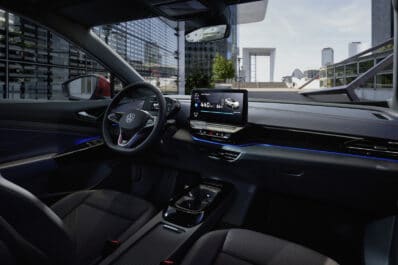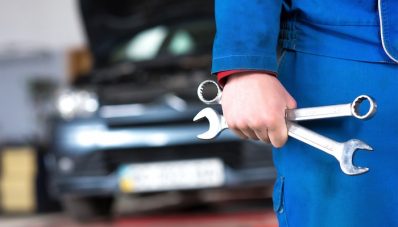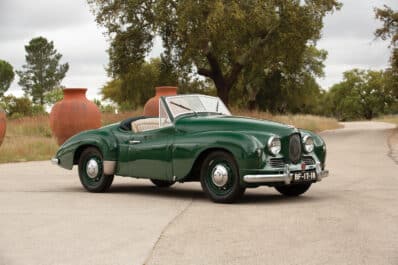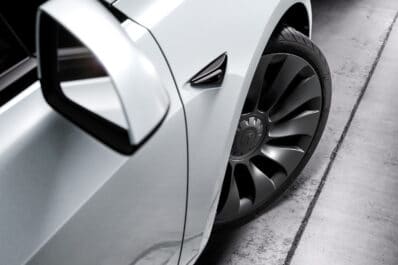BMW has pulled the wraps off its seventh-generation flagship and, with the launch of the 2023 7 Series, buyers have the choice of sticking with two conventional gas-powered drivetrains or switching over to an all-electric version of the sedan, the new i7.
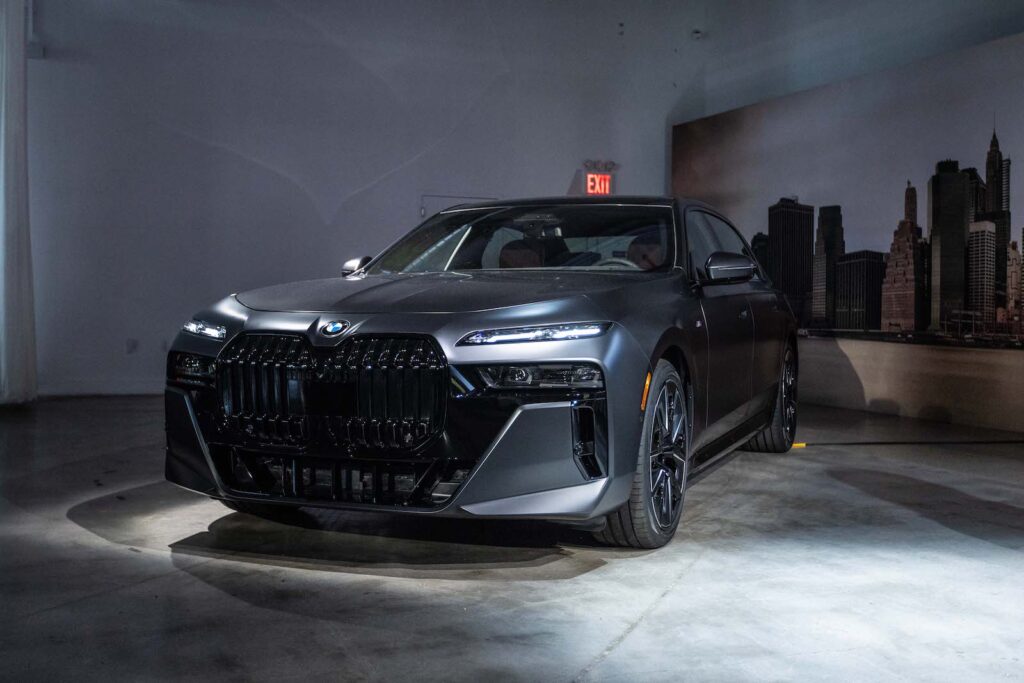
The Bavarian automaker is counting on the new 7 Series line-up to give it a leg up on archrival Tesla. The all-electric startup’s Model S has toppled the traditional leaders in the premium luxury sedan segment, including both the 7 Series and the Mercedes-Benz S-Class.
“These vehicles celebrate the very best of BMW engineering,” Sebastian Mackensen, president and CEO of BMW North America, said during a media background briefing ahead of the formal public debut. With its expanded drivetrain options, the 7 Series line-up, he added, “is our new flagship in so many ways.”
Double dipping
BMW isn’t the only automaker that has launched internal combustion and battery-electric versions of its flagship lately. Mercedes last year rolled out both a complete makeover of its S-Class as well as the all-new EQS battery sedan. But BMW has taken a decidedly different approach.
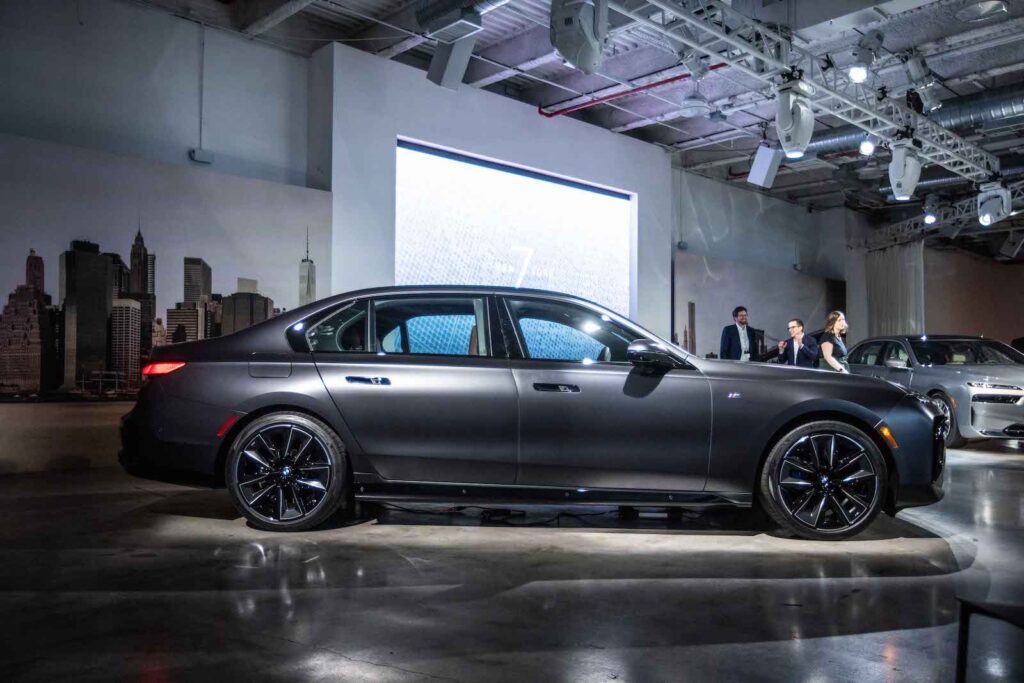
Both gas and electric versions of the 2023 7 Series share the same basic exterior design, which rides on a flexible platform designed to accommodate a variety of different powertrain technologies.
For now, three different powertrain packages will be offered, starting with the 3.0-liter TwinPower Turbo inline-6. While it uses a fuel-saving Miller Cycle design, it still manages to deliver 375 horsepower. The 760i xDrive also uses a TwinPower Turbo and borrows liberally from BMW Motorsports technology. The 4.4-liter V-8 bumps output to 536 hp, which is directed to all four wheels. Both engines are paired with an 8-speed Steptronic transmission. And both rely on a 48-volt mild hybrid system which manages to enhance performance while also boosting fuel economy.
The all-new BMW i7, meanwhile, relies on twin electric motors, one on each axle. It matches the pony count of the V-8 but delivers 549 pound-feet of torque, allowing it to launch from 0-60 in just 4.5 seconds.
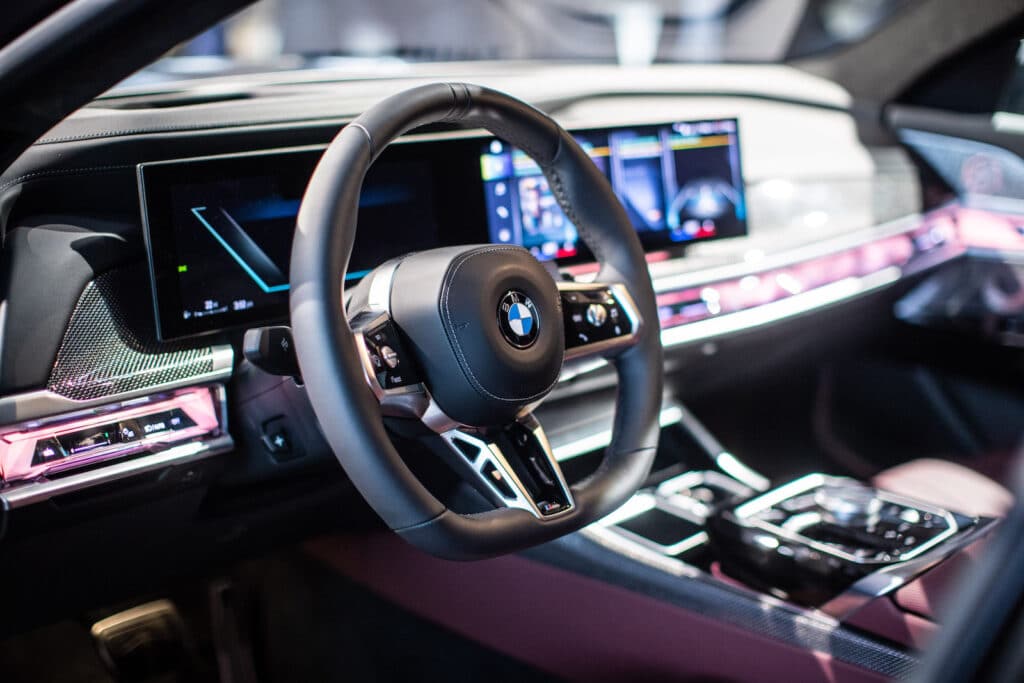
The 101.7 kilowatt-hour lithium-ion battery pack can draw down as much as 195 kilowatts of power and add 80 miles of range in as little as 10 minutes using a high-speed public charger.
The all-electric i7 is expected to deliver about 300 miles per charge.
Look for additional versions of the new 7 Series to follow, including a 483-hp M750e scheduled to land in U.S. showrooms sometime next year.
Bigger and better
The new sedan has grown in virtually all dimensions, a fact sheet noting the 2023 BMW 7 Series “has grown by 5.1 inches in length to 212.2, by 1.9 inches in width to 76.8, and by 2 inches in height to 60.8. Its wheelbase is now 0.2 inches longer at 126.6,” and it offers more head, leg and cargo space.
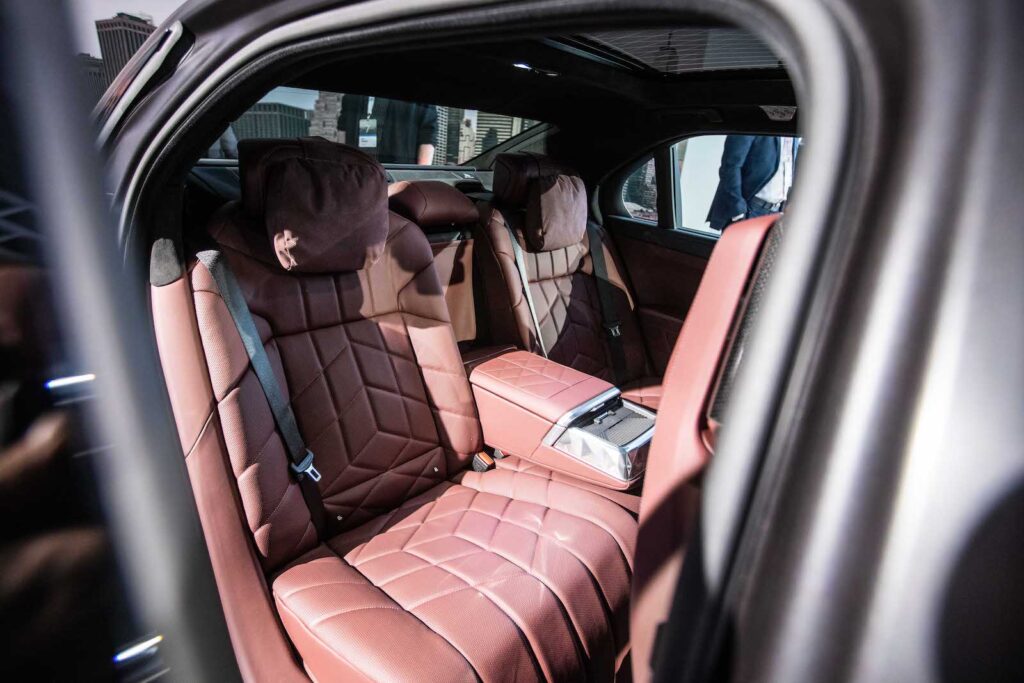
Unlike some recent BMW offerings, the new flagship retains a relatively conventional take on the brand’s iconic double-kidney grille — though it is a bit wider than on the old 7 Series, and can be ordered with built-in lighting. The grille on the i7 is closed since no air is needed under the hood. Additional intakes under the bumper provide air for the electric model’s battery pack and motors.
The headlamps are now divided into two sections, and the upper elements, noted BMW, can be “highlighted by optional Swarovski crystal details.”
For the moment, conventional LED lighting will be used for U.S. models but adaptable lighting technology will be introduced once federal regulators complete the approval process. That technology will instantly adjust to traffic, dimming just portions of its beam to prevent blinding other motorists or pedestrians.
The overall proportions of the new 7 Series reflect those that we’ve seen since the big sedan was first introduced 45 years ago, with a classically long hood. Like the shorter EQS “bonnet,” motorists can’t open the hood on the i7, despite the fact that there’s no engine — and no “frunk.”
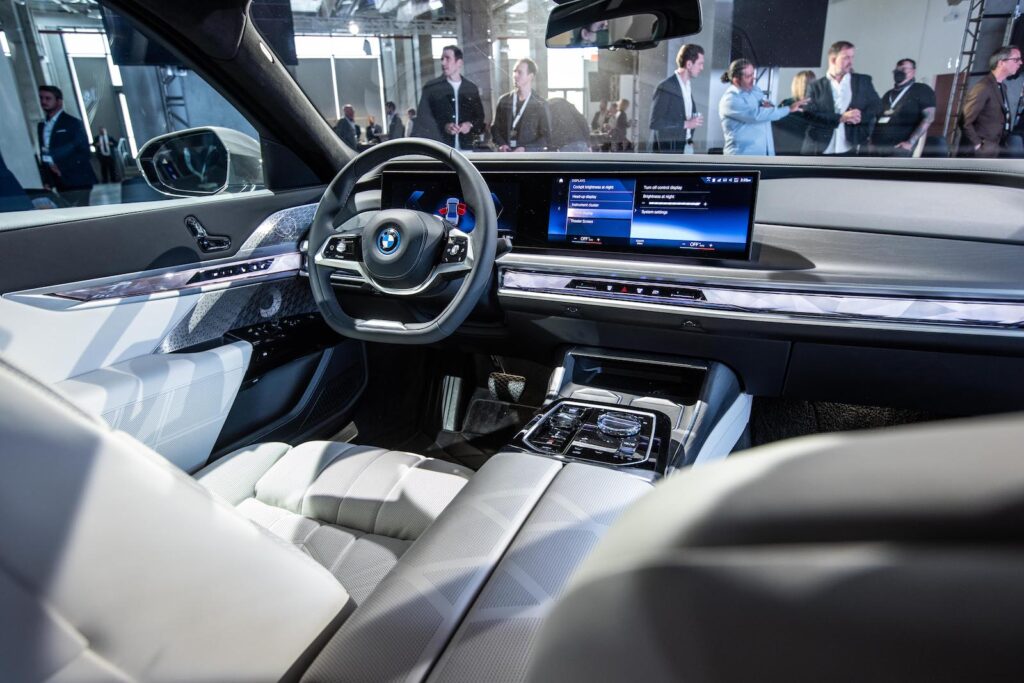
The profile of the new 7 Series reveals few sharp lines. The overall look is much more gently sculpted than the outgoing sedan. The back end is distinguished by wide, slit-like LED taillamps.
Cabin upgrades
Inside, both gas and electric models share much the same, roomy and well-appointed interior. The rear seats ride slightly higher on the i7, however, allowing BMW to squeeze in some additional batteries. The i7 also loses a bit of cargo space, at 11.4 cubic feet compared to the 13.7 cf of the gas models.
Traditional and sustainable materials come together in the cabin, including stainless steel speaker covers and open-pore woods. One of the more notable details is the use of a transparent glass knob for BMW’s familiar iDrive controller.
While it doesn’t stretch pillar-to-pillar like the Mercedes EQS Hyperscreen, the 7 Series does expand upon the old model’s digital display which covers about two-thirds of the instrument panel.
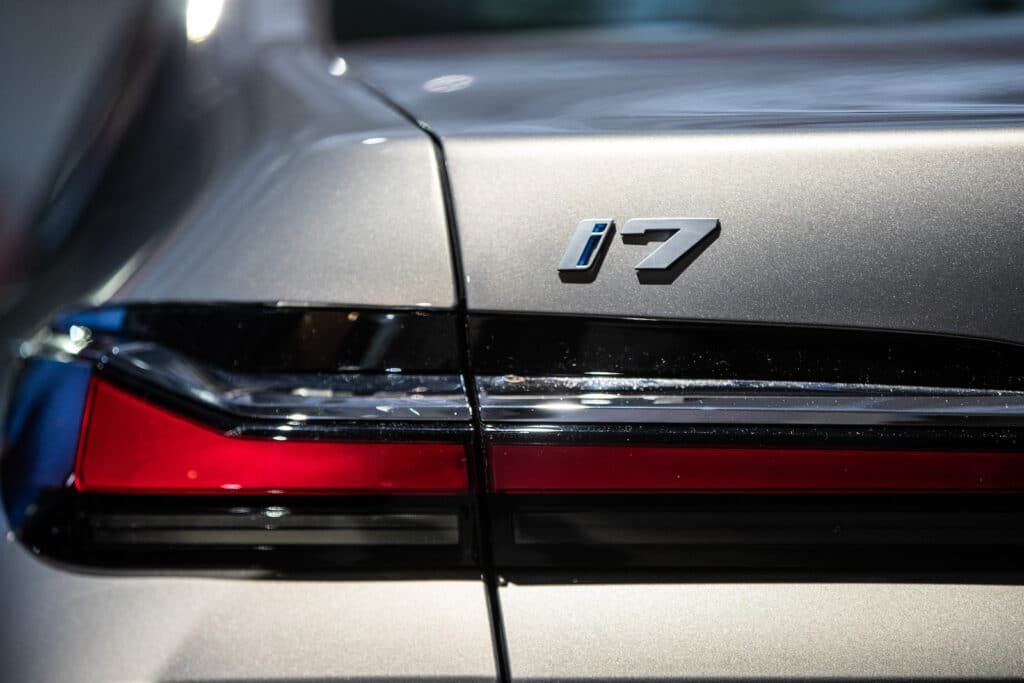
What BMW calls the “Interaction Bar … houses touch-sensitive control panels for adjusting the ventilation and climate control, activating the hazard warning lights and opening the glove compartment. The light design of the BMW Interaction Bar takes its cues from the color palette of the My Mode setting selected or can be set as desired by the user.”
The automaker has tweaked virtually all key design elements, including the steering wheel and all-new shift selector.
New 5.5-inch digital control touchscreens are built into the trim of the rear doors and, with models equipped with the BMW Theater system, lets occupants select their choice of entertainment.
Among the technology onboard the new 7 Series, the navigation system is cloud-based to remain constantly up-to-date. Auto-opening doors are on the checklist. So is the optional Bowers & Wilkinson Diamond Surround System will offer up to 36 speakers and 1,965 watts of audio. For the i7, buyers will have the option of ordering the new BMW Iconic Sounds Electric. It lets them choose from different simulated audio soundscapes that the automaker says will enhance the driving experience in what otherwise would be the near silence of its electric drive.
The first three versions of the 2023 BMW 7 Series will roll into showrooms this coming November. The 740i will start at $93,300, the 760i xDrive at $113,600. The i7, meanwhile, will carry a starting price of $119,300, or $6,300 less than the smaller Mercedes EQS 580 4Matic. A base version of the Tesla Model S starts at $99,990.



